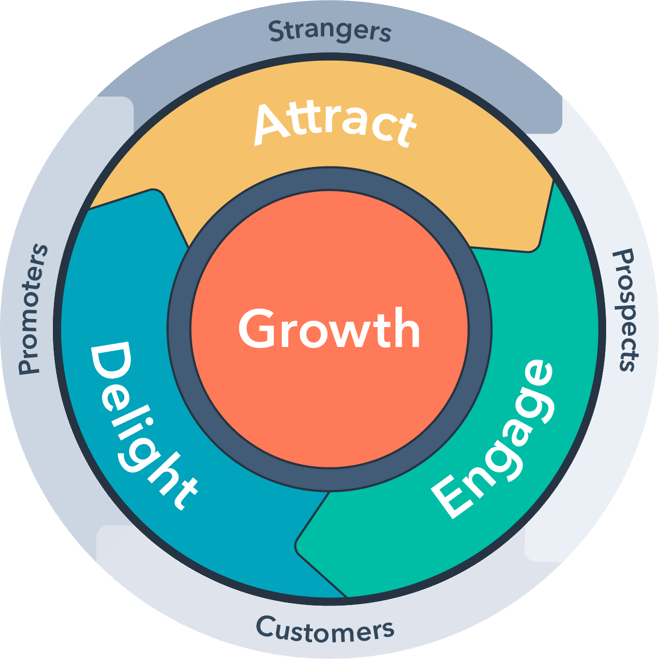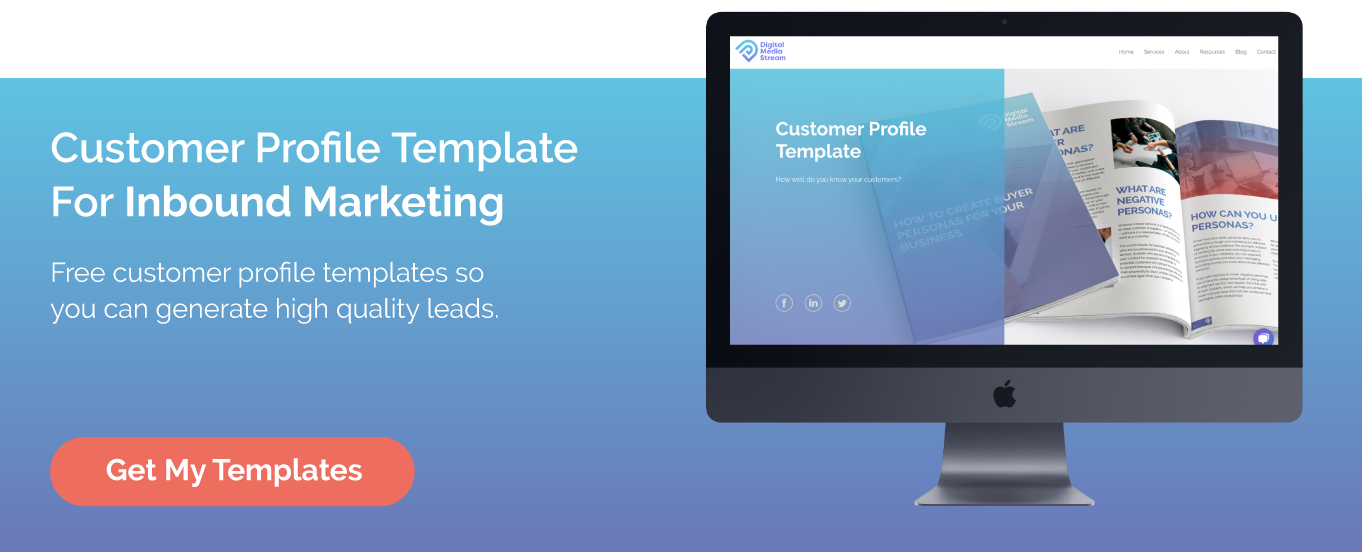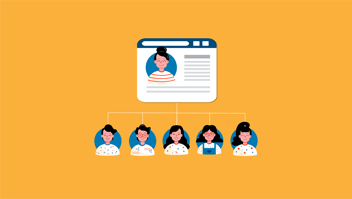An essential part of any Inbound Marketing strategy is understanding exactly who you’re trying to target - i.e. your ideal customer - and finding the best ways to align your marketing activities in order to attract them to your brand.
This step can sometimes be overlooked or underestimated - often pushed to the back of the priority queue in favour of other marketing activities. But without a thorough understanding of your customer personas, how could you ever be sure you're delivering the right messages to the right people?
Customer demands are evolving. The best way for businesses to stay relevant is to ensure they're not only speaking about their customer-centricity - but actively showing it.
Buyer Personas are one of the most insightful and effective ways to gain a clearer understanding of your audience's likes, dislikes, challenges and needs.
Read on to find out all you need to know about this core activity of your Inbound Marketing strategy.
What is a Buyer Persona?
Buyer Personas are semi-fictional, generalised representations of your ideal customer. Personas can be grouped together based on their occupation, industry, and even their core KPIs related to their role. By categorising personas into groups, you can more effectively shape your marketing strategy to attract, engage, convert and delight more customers, more reliably.
A buyer persona is created using market research, coupled with insights from your actual customer base. There are various avenues to attain relevant information about your target audience, and the broader the range of your sources are - the more insightful the information is.
Formulating a Buyer Persona is the first step in creating a new Inbound Marketing campaign; it shapes key messaging, determines your priority marketing activities, and acts as the compass to align your strategies and tactics to produce a better ROI.
A well-structured Buyer Persona can help you create content based around what interests, educates and informs your audience, as well as helping you identify their barriers to purchase.
![]()
How to Create your Buyer Persona(s)
How to Create Your Inbound Marketing Personas: 9 Considerations
The first step in creating your Buyer Persona is conducting research.
As stated above - you can conduct market research - but if this isn’t a possibility for you, just think about your current customer base or your ideal customer.
Follow the steps below to come up with your own perfect Buyer Persona - we’ll create a buyer persona for a fictional business to help you with coming up with your own.
Our example is a small Accountancy firm. While they handle businesses of varying sizes, for this campaign they want to specifically target startups and SMEs, from the tech industry in particular. Imagine yourself as that Accountancy firm as we talk through creating a Buyer Persona for their target customers.
1. Create Buyer Persona Group Names
Allocate a summary or group name, preferably something catchy and easy to remember. Examples include Marketing Mick or CEO Sally. Defining a name for each group helps to organise them - especially useful if your business will have multiple Buyer Personas.
Our Buyer Persona, the target customer of our Accountancy firm, is Director Dan. He's the director of a small tech company.
2. Determine The Age Group
Make note of their approximate age range. It's easiest to use ranges instead of specifics. Relevant, personal details like this will become important later down the line when we start to think about how to attract the persona.
Dan is aged approximately 28 - 40.
3. Consider Their Role
Find out what their job title and income brackets are. This will help you position your messaging to appeal directly to decision-makers who have the authority and budget to make the decision to work with your brand.
Dan is a director of an SME in the tech industry. He took a pay cut when he started his tech company and now earns £24,000 a year, but before he started his own business he was earning around £35,000 a year.
4. Promote Content Where They Spend Time Online
Consider where your audience spends time online. You need to think about where your buyer persona will be looking for information. How do they conduct research when considering a purchase? This will show you where you should be promoting your content for maximum visibility. Often, their age can inform where they spend their time online, how long they’re online for, as well as the terminology they’d be most familiar with.
As Dan has started up his own business in tech he is naturally very tech-savvy. He looks for information online using search engines and reads tech websites and forums to help him make purchase decisions. The industry he is in means he checks in on social platforms throughout the day and is never too far from his laptop or smartphone.
5. Speak Their Language
What are their personality traits and how do they communicate with others? This may seem insignificant but it will help you form the tone of your content in a way that resonates with the audience and avoids alienating any prospects.
Dan’s age tells us he communicates via social media and applications like Facebook, WhatsApp, Twitter and LinkedIn. The fact his business is in the tech industry suggests Dan is relatively laid back and appreciates a friendly, honest approach.
6. Remember: Time Is Money
Assess your personas workload. If, for example, your persona is very busy from day to day, they might prefer more “to-the-point” discussions as opposed to long-form content. As valuable as a 30-page guide is to other roles or audiences, they will likely simply not have the time to read content that lengthy. They might find the best value in short videos, infographics, or even FAQ-style articles.
As Dan has started up his own business with only 2-4 employees currently, we can imply that Dan is very busy and will prefer to-the-point discussions.
7. Solve Their Problems For Them
Identify their goals and the challenges they face before they can reach them. This will further define your content planning as you can address ways for your audience to tackle their challenges and reach their objectives more effectively - positioning your brand as the solution to their problem.
Dan’s business is a start-up/SME and is rapidly growing. In the last two years, it has grown by 4 employees and now Dan has identified a need for an accountant to help him manage the business's cash flow and payroll. As with many SMEs, cash flow is a big issue for Dan and so he is price-conscious.
8. Get Real-World Insights on How You Can Help Them Reach Their Goals
Collect some sample quotes from your target audience that can be used to sum up your persona and what they want to achieve. This will in turn help you to guide your content strategy to promote content that serves your audience's purpose.
Director Dan:
‘My growing business means I can no longer keep up with the administrative burden of managing my own accounting’
‘Now I have a bigger limited company, my accounts are getting too complicated to manage alone’
9. Answer Their Questions
Have answers at the ready by identifying what kinds of questions are your personas going to be asking. By pre-empting common questions, you can create content that is available for any prospect to find as soon as they need answers. This type of activity shapes thought-leadership content and establishes industry- and topical-authority.
When Director Dan is either looking for more information on employing an accountancy firm, considering which accountancy firm is right for him, or making his decision on whether to purchase, there are questions that Dan will ask. These questions will give you direction on what content you should be writing and this should be aligned with where Dan is on his buyer journey detailed below:

Here are some example questions:
Attraction Stage:
- Do I need an Accountant?
- Should I look for an Accountancy Firm for SME’s?
- How do I choose an Accountant?
Consideration Stage:
- What are the top 5 Accountancy firms for startups?
Decision Stage:
- What can I expect from my Accountant?
- Case study: Accounting in the Tech Industry
A Great Buyer Persona Is The Foundation Of a Successful Inbound Marketing Campaign
There's a lot that goes into creating a Buyer Persona. From asking the right questions and ensuring you stick to customer profile best practice guidelines - it can be quite time-consuming. But, anything worth having is worth working for!
What you do with your customer profile examples after they've been created is just as important as the process itself. A comprehensive buyer persona offers incredible value and can help you position your brand ahead of the competition in many ways by laying the foundation that makes people want to be your customer.
As we've seen with Director Dan, a Buyer Persona profile shares many meaningful insights that will help the accountancy firm more easily appeal to him directly.
This Buyer Persona can help the accountancy firm to:
- Decipher who they’re targeting
- Determine the tone of voice that will work best
- Strategise and plan the type of content to produce
- Find the best platforms to put that promote their content so it’s visible to Dan,
- Identify what questions Dan might have before he will buy,
- Highlight his barriers to purchase
- ...and so much more!
Detail is key
It's worth remembering that while Buyer Personas are an incredibly valuable asset to help you understand your audience, they will never 100% cater to every individual within any audience. People are unique, and their needs, challenges, likes and dislikes will often vary drastically.
Your personas are for reference only
Change is good!
Demographics are constantly shifting; what your target audience wants today may not necessarily be the same as what they’re after next year, or even just a couple of months from now.
By keeping an eye on the online activity and purchasing behaviour of your target audience you can stay up to date with their needs, and any changes to the challenges they face. This will help you make informed decisions on how and when to revise your buyer persona.
In summary: Buyer Personas are essential for cementing an understanding of your target market within your business and will direct your strategic activities within your Inbound Marketing campaign.
Are you ready to get started on creating your very own Buyer Persona? Download our FREE Template here - or if you're looking for additional resources - you can download our guide on how to create your buyer persona for a more in-depth look at the process.






